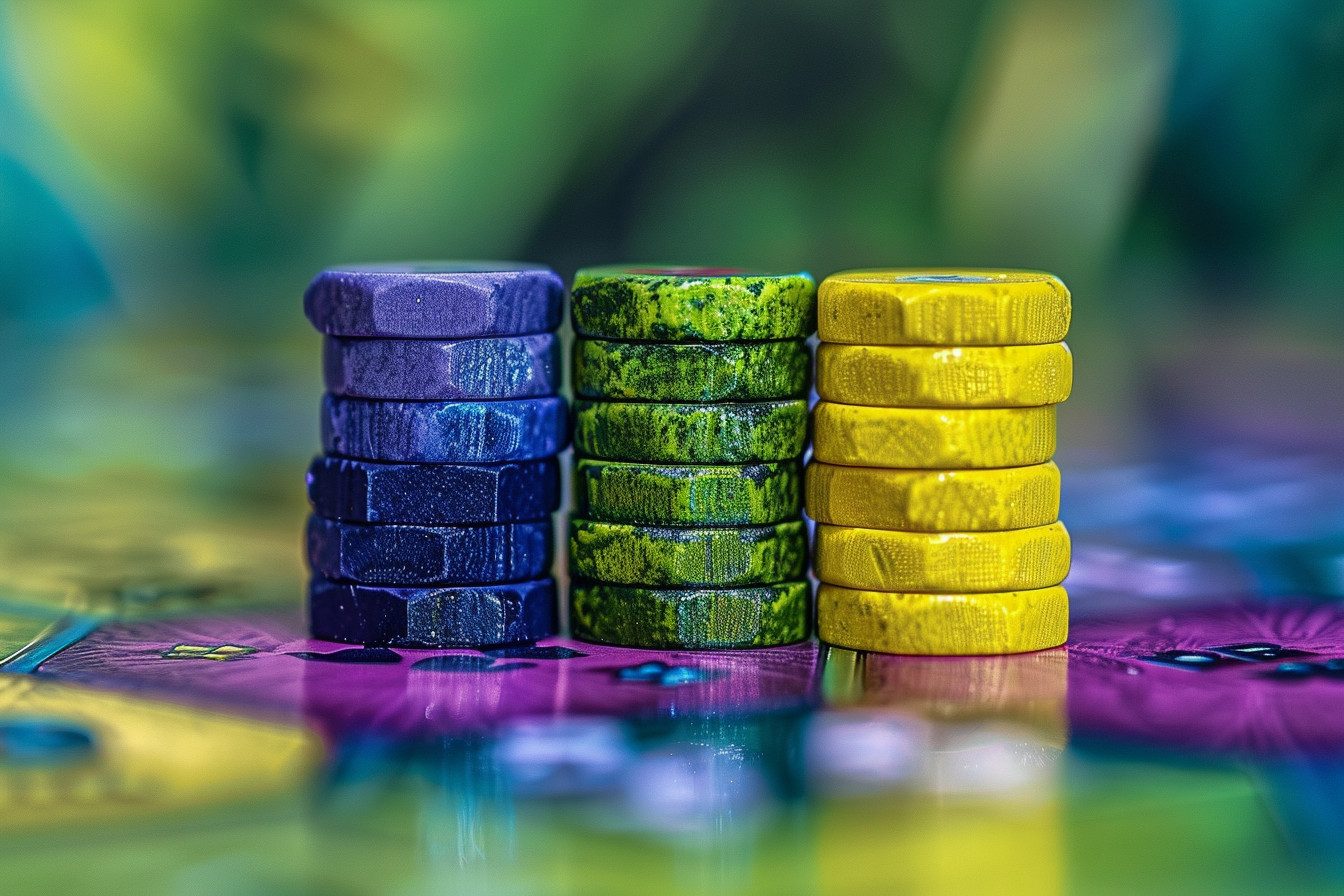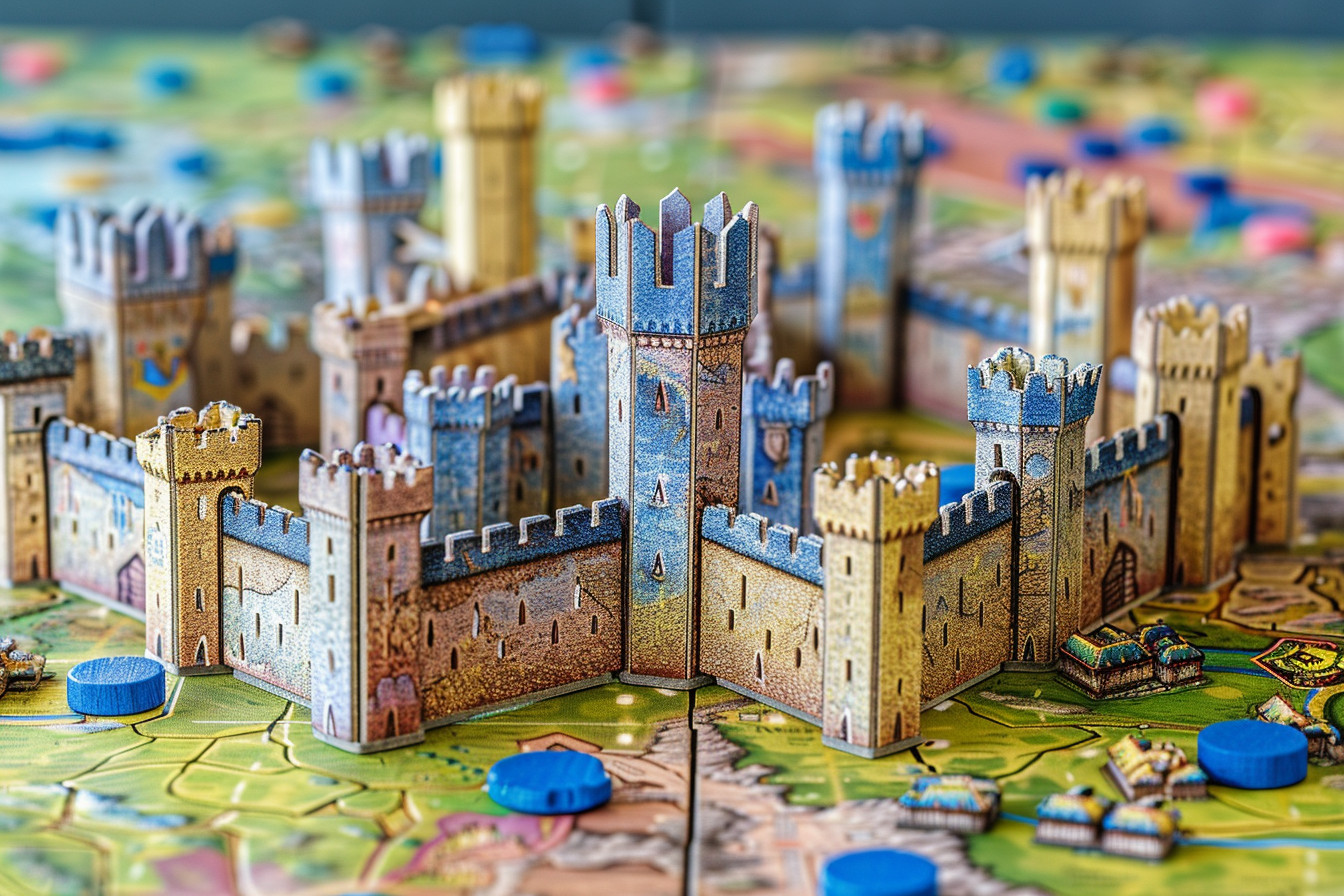Splendor, designed by Marc André and published by Space Cowboys, has been widely acclaimed since its 2014 release as a triumph on the part of players from around the world. In this strategic board game where one must manage resources and do actions, players become merchants in the Renaissance Age to win prestige points. Splendor’s obvious simplicity along with its underlying complexity make it my favorite game among many others that fill my gaming closet.
I first started playing Splendor when it struck me how accessible the rules are, yet at the same time there’s always more that one can learn to improve. You start with just one emerald each turn and must buy development cards in order to collect more gems for yourself–but these will serve as bait in an “attraction engine” that attracts nobles at a later stage of play. The goal is to score 15 points before anyone else does. Mechanisms used by the game are quite simple, while strategic calculations on each move are not so easy–it all depends upon how accurately those calculations reflect present and future changes in game conditions.
One of my fondest memories playing Splendor comes when we are having a game night with friends. We had just finished another heavier game and were looking for something a bit lighter yet no less engrossing. Splendor fitted the bill at once. As the game went on, quiet and laughter mixed among us in equal measure as people tried to get ahead of each other. Physically holding those heavy poker-piece gem tokens really gave me joy, and watching them fall into place after a well-worked out strategy was extremely satisfying as well.
Setup
Splendor is uncomplicated to set up and can therefore often be found at our regular gaming nights. The game has three main types of pieces: gem tokens, development cards, and noble tiles. To begin, you deal out the board and place the gem tokens into stacks by color: emerald (green), sapphire (blue), ruby (red) and diamond (white), onyx (black) and also a new stack (joker) of special gold tokens.
Then shuffle the three decks of development cards, which are divided by level (I, II, and III), and lay them face down in their respective areas on the board. Drawing from each deck, select four cards and lay them out face up in a row. These are available developments players can purchase during the game. Cards with lower levels are generally cheaper but provide fewer points, whereas cards with higher levels are more expensive and typically offer a prestigious return.
The final part of the set-up is the noble tiles. Shuffle the noble tiles and display a number of them face up on the board that is one more than there are players in play. They spring from wealthy patrons who will hand out extra prestige points to players who satisfy specific requirements on their own. Also, for recommending this game to someone, having nobles in the offering brings a second strategic element into the game.
After the components have been arranged, each player selects a color and takes an appropriate player mat upon which to keep lists of his or her development cards and the points at their end. With everything else whipped through in just a few minutes, this game setup can be unfurled and played fast. This advantage is particularly appreciated by the introducer, who wants to keep people excited but not let them stand around for long as they learn how to start playing.
Gameplay
On his turn, a player can perform one of these four actions: Take 3 gem tokens of different types; take 2 tokens of the same color; reserve a development card and receive 1 gold token; purchase one on either board or from cards that has been reserved.
Each development card must be purchased with a specific combination of gem tokens; once you have purchased a card, it provides a permanent bonus in gems that reduces the costs of future cards. This engine-building aspect of Splendor is immensely satisfying: as players gradually accumulate more and ever better purchasing power, they can afford all but the most expensive development cards.
With this concept in mind, gamers can save a desired card for later purchase. Additionally, the card allows players to take (conceal) a Gold token (not an issue, however, if used in an later buy with no cash due). This is very important for making difficult transactions. The cards could also be bought when the player had accumulated enough jewels. This introduction of forethought into the course of play may make you an even nimbler strategist.
Pros
The game’s elegant design and high-quality components are major pro. Delighted at these gems that feel like poker chips in hand and wipe clean with water after use; is one example among many that show how players have gained tactile pleasure from touching the game Rather than go into more detail woman’s fine art salute activities become [irrelevant], taking the opinions of a writer (in the form of, for example
Splendor’s strategic depth is another high point. Although the rules are simple, the game allows for much strategic planning and tactical decision-making on the part of its players. Each player must carefully manage their resources in gems, plan what they will purchase next and try to guess when an opponent may make a move that is beneficial to themself while damaging him or herself (or vice versa). The balance between simplicity or complexity in decision-making at such moments ensures not only relaxation but also stimulating intellectual engagement as well
Splendor is the hallmark of a good board game. Random placement of development cards and nobles ensures that no two games are ever identical. Each visit to the table offers new challenges and opportunities, which makes it even more interesting over time I’ve played Splendor countless times, but it doesn’t get boring
The game’s play style is itself another plus. With hands completed in around 30-45 minutes, Splendor is relatively quick to play. This makes it easy to fit in an evening without much of an error and patient waiting period between turns can be quite lengthy People have split up, but still this line remains uninterrupted because everybody keeps contributing so profitably for the team’s continued existence.#
Cons
Splendor, despite its many strengths, is not without a few weaknesses. Surging the flow of gems or cards When there are not enough suitable cards available or insufficient raw materials for obtaining additional gem stones.
Some people may not think Splendor’s lack of direct player interaction is a disadvantage but to others it’s a reason for choosing another game. Although there is some competition as players race to buy development cards and win the favor of nobles, the game is primarily oriented toward creating individual strategies. Players used to games which have more direct confrontation; those who feel a greater need for human contact and all manner of other things thrown at you in the course of play may find Splendor’s indirect competition somewhat less satisfying. However, this can also be seen as a merit to those who seek a quieter gaming experience.
The game’s theme can be abstract to some players, despite its beautifully executed design. Having set the stage with a Renaissance merchant theme, it focuses on trading gems and acquiring development cards for all that. As this abstracts the game from any narrative or thematic elements you might expect to find in such an environment, people who prefer their games to offer an interesting story or at least some kind of compelling fiction as they play may not enjoy playing Splendor much in these regards.
Finally, the end condition of the game can sometimes feel abrupt. When a player acquires 15 prestige points, Splendor is over — players can easily be caught out if they keep an eye on the board and not necessarily their scores. The sudden ending may be quite disconcerting, especially in close games where victory hinges on one move. It’s finding all players know the points and place for a possibly imminent end that will help sort this problem.
Final Thought
Splendor is a deserved classic in the board gaming world, combining elegant design, simple rules and good strategy Makes it worthy of serious consideration by both novices to board games as well as experienced players. I
One of the game’s strengths is its ability to generate unique moments. This creates a satisfying experience form completing an important development card, from seeing a perfect strategy come to fruition or experiencing the excitement of attracting nobles in race conditions. I’ve played countless games of Splendor and each one has given me new difficulties and mysteries, but the game still remains refreshing and interesting.
In terms of popularity, splendor’s accessibility is another big factor. The rules are simple to learn, so Splendor is an ideal way to introduce people to the world of board gaming. It also gives strategic depth so long-time players remain both captivated and challenged. This balance between simplicity and complexity is exactly what makes for great game design; it is a big part of what makes Splendor so appealing.
In short, Splendor is more than a game; it is an experience that brings people together, inspires creative thinking and offers endless fun opportunities. No matter if you’re picking up gems to complete a vital development or dashing for the last noble, Splendor combines strategy and beauty in a way that is bound to enchant any observer. If you have not yet been captivated by the magnetism of Splendor, this is a game I can’t recommend too highly. It’s not just a game but an initiation into the world of gem trading and development card getting. So pour out those gems, build up the stacks of sapphires and dive headfirst.







